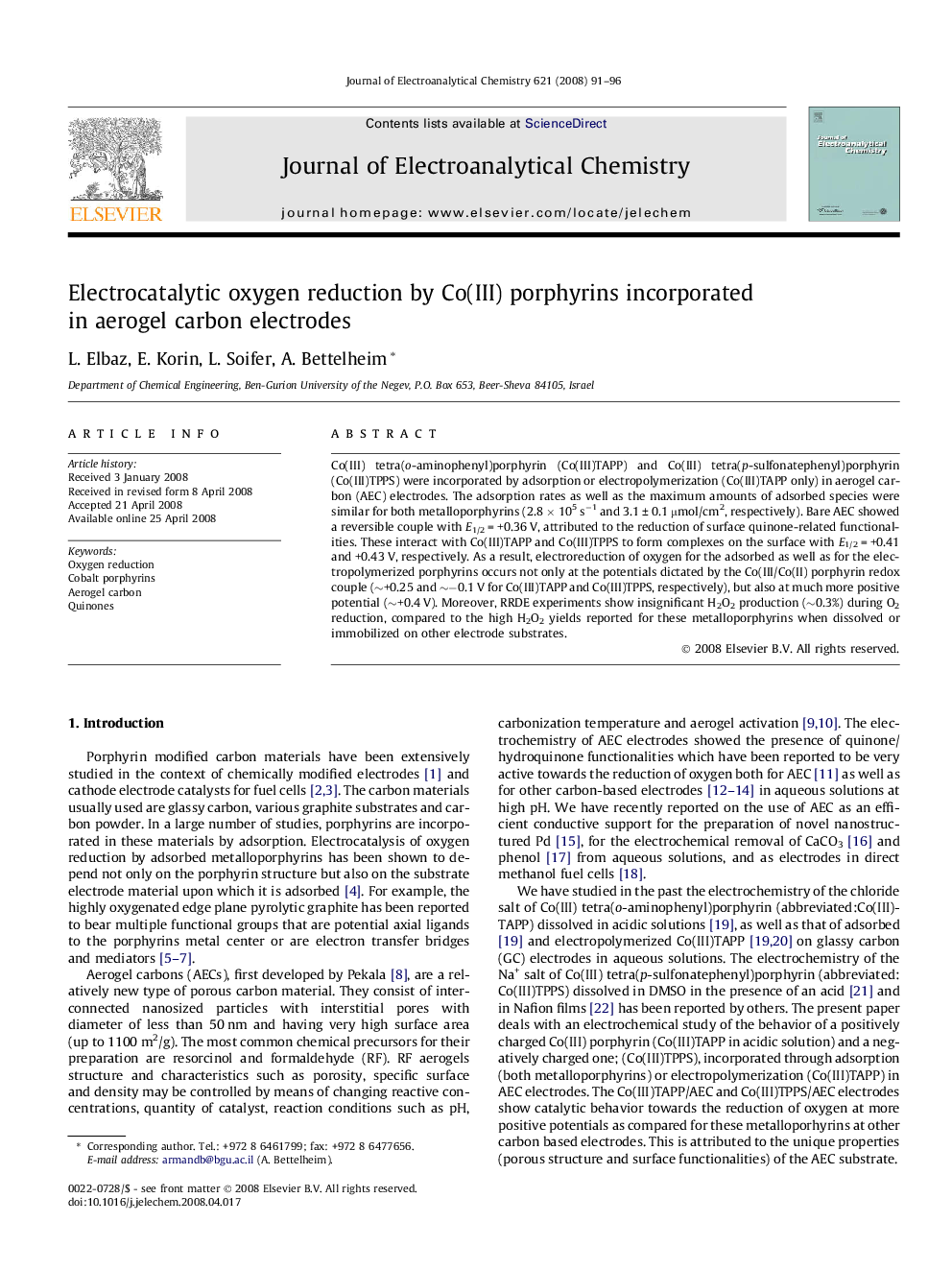| کد مقاله | کد نشریه | سال انتشار | مقاله انگلیسی | نسخه تمام متن |
|---|---|---|---|---|
| 220474 | 463334 | 2008 | 6 صفحه PDF | دانلود رایگان |

Co(III) tetra(o-aminophenyl)porphyrin (Co(III)TAPP) and Co(III) tetra(p-sulfonatephenyl)porphyrin (Co(III)TPPS) were incorporated by adsorption or electropolymerization (Co(III)TAPP only) in aerogel carbon (AEC) electrodes. The adsorption rates as well as the maximum amounts of adsorbed species were similar for both metalloporphyrins (2.8 × 105 s−1 and 3.1 ± 0.1 μmol/cm2, respectively). Bare AEC showed a reversible couple with E1/2 = +0.36 V, attributed to the reduction of surface quinone-related functionalities. These interact with Co(III)TAPP and Co(III)TPPS to form complexes on the surface with E1/2 = +0.41 and +0.43 V, respectively. As a result, electroreduction of oxygen for the adsorbed as well as for the electropolymerized porphyrins occurs not only at the potentials dictated by the Co(III/Co(II) porphyrin redox couple (∼+0.25 and ∼−0.1 V for Co(III)TAPP and Co(III)TPPS, respectively), but also at much more positive potential (∼+0.4 V). Moreover, RRDE experiments show insignificant H2O2 production (∼0.3%) during O2 reduction, compared to the high H2O2 yields reported for these metalloporphyrins when dissolved or immobilized on other electrode substrates.
Journal: Journal of Electroanalytical Chemistry - Volume 621, Issue 1, 1 September 2008, Pages 91–96